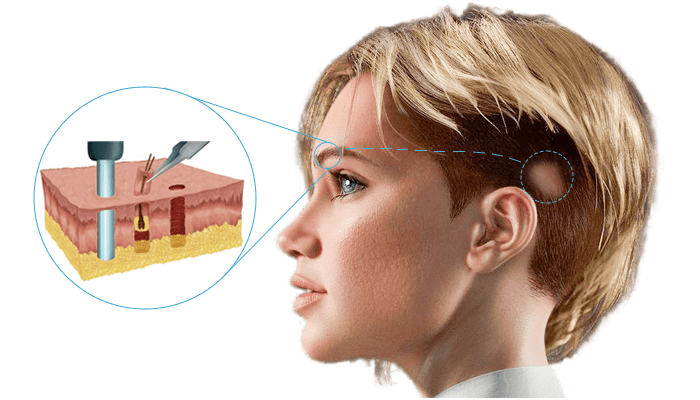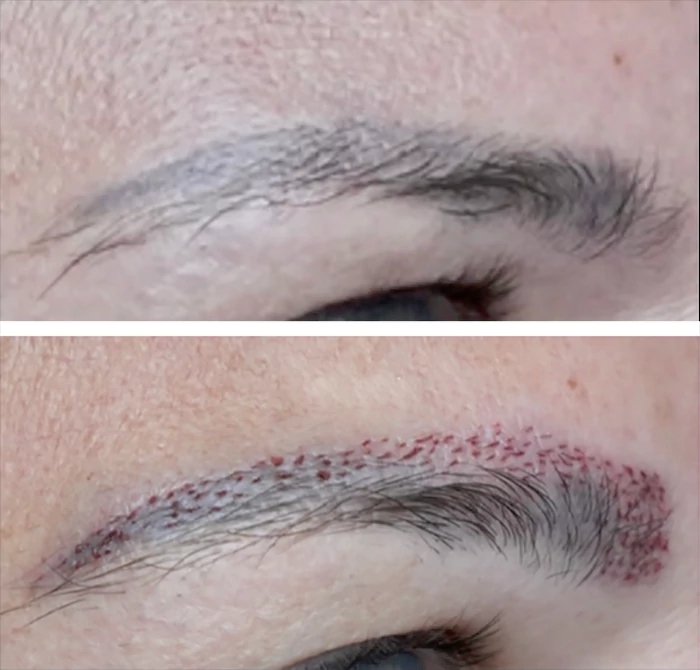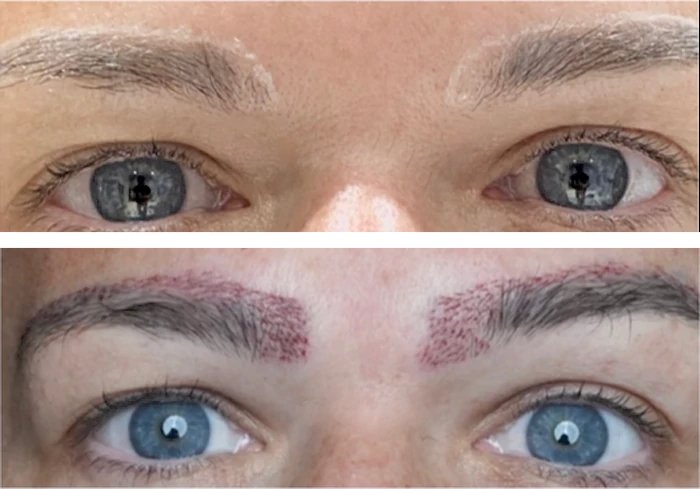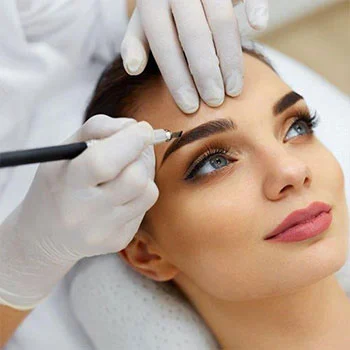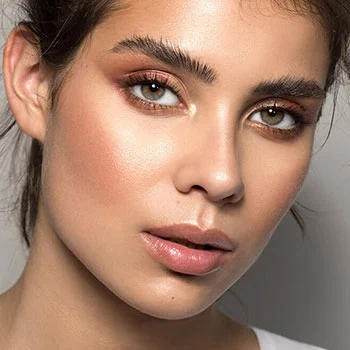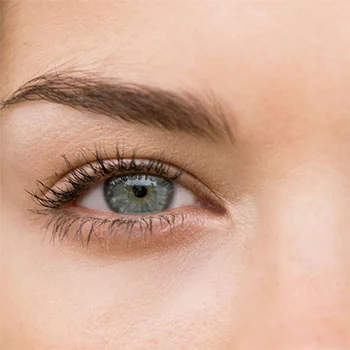Introduction
Eyebrows play an important role in shaping and defining the face and can greatly impact overall facial appearance and beauty. They can enhance the eyes and create facial symmetry, balance, and proportion.
A person's genetics can impact the fullness and appearance of their eyebrows - some people are born with thick, dense eyebrow hair, while others have thin, sparse hair. When people don't have much eyebrow hair, they often fill them with cosmetic products, making them appear fuller or thicker.
Various remedies and procedures have been used to enhance eyebrow appearance, including lamination, tinting, and microblading, but with the advancements in cosmetic medicine, many people are now opting for more lasting solutions, such as eyebrow transplantation, to achieve more natural and fuller eyebrows for a longer time.
What is an eyebrow transplant?
Eyebrow transplants involve transplanting hair follicles from one area of the scalp to the eyebrow area. The technique is designed to create a fuller and more natural-looking eyebrow. It is performed with two main techniques: Follicular Unit Transplantation (FUT) and Follicular Unit Extraction (FUE). If done by a trained and experienced surgeon, eyebrow transplant is relatively safe. However, it can be expensive, and results may take a long time to appear.
Who is a good candidate?
An eyebrow transplant is a good option for people with thin or sparse eyebrows because of genetics, over-plucking, or other factors. It's also a good option for people with scarring on an eyebrow or those who have lost their eyebrows due to some medical conditions or medications. That said, this treatment does not work for people with alopecia areata (hair loss due to an autoimmune disorder) or those with untreated trichotillomania.
Additionally, a good candidate has realistic expectations for the procedure's outcome, understands the potential risks and complications, and is in good overall health. It is also important for the person to have enough hair on the scalp or body from which the hair grafts can be harvested for the transplant.
How is it done?
There are two methods for eyebrow transplants: Follicular Unit Transplantation (FUT) and Follicular Unit Extraction (FUE).
The FUT procedure involves removing a hair-bearing scalp strip from the head's back side. In the next step, hair grafts are separated from the strip and transplanted to the eyebrow. This technique leaves a linear scar on the scalp, which will usually be covered with your hair.
Alternatively, in the FUE method, the grafts are directly harvested from the scalp or other body areas (such as the beard or chest) using a punch tool. Afterward, the grafts are transplanted into the eyebrow area. This technique doesn’t leave a large scar on the scalp, but some tiny scars in the form of small dots are created in the donor area, which will fade away over time.
Both techniques are performed under local anesthesia and take several hours to complete, dependent on the number of grafts transplanted. The FUE method takes a more time than FUT because the hairs need to be extracted individually.
How to prepare for surgery?
The following steps can help you prepare for an eyebrow transplant:
- Consult with a qualified and experienced hair restoration surgeon to determine if an eyebrow transplant is right for you and to discuss any concerns you may have.
- Two weeks before surgery, you should stop smoking and drinking alcohol, as these can slow down the healing process.
- Blood-thinning medications, for example, aspirin, ibuprofen, and vitamin E can cause excessive bleeding during surgery. So avoid these before the procedure.
- Make arrangements for someone to drive you home after surgery and stay with you the first night.
- Make sure you have all the necessary post-operative instructions, medications, and dressings that you will need to care for the transplanted area.
- Plan for some time off work, as you may need a few days to rest and recover after the procedure.
- Follow any other pre-operative instructions provided by your surgeon.
How is the recovery?
While recovery from eyebrow transplants can vary, most people return to work within a week and resume normal activities within a few days. However, it's important to avoid strenuous activities and protect the transplanted area from sun, sweat, and dirt for at least two weeks.
Here are some things you can expect during the recovery process:
- Swelling: It is normal to experience swelling around the eyebrows, which will subside in a few days.
- Bruising: Some bruising is normal but usually disappears within a week.
- Redness: The transplanted area may be red for a few days, but this should also subside within a week.
- Scabbing: Scabs may form on the transplanted area, so keep it clean and dry. The transplanted hair follicles can be damaged by picking at the scabs.
- Pain: During the first few days, you may experience discomfort, but the pain should be minimal. Pain medication will be prescribed to ease any discomfort you may be experiencing.
- Transplanted hair falling out: The transplanted hairs will start falling out in the first weeks following the procedure and then they start to regrow in about 3-4 months.
You will be provided with post-operative guidelines by your surgeon. To achieve the best results possible, you should carefully follow these instructions.
It's also important to follow up with your surgeon after the surgery to ensure that the transplanted hair is growing properly and to address any concerns you may have.
What are the risks and complications?
Like any surgical procedure, an eyebrow transplant carries certain risks and complications. There are a few serious complications associated with the procedure, but it's wise to know about them before proceeding.
An eyebrow transplant can be associated with the following risks and complications:
- Infection: An infection can occur at the transplant site, although this is rare when a qualified and experienced surgeon performs the procedure.
- Bleeding: Bleeding is uncommon but can occur during the procedure, especially if you take thinning medications before the surgery.
- Scarring: Scarring can occur at the donor site (where hair follicles were harvested) with the FUT method, but the hair usually hides this. The FUE method doesn't leave any visible scars on the donor site.
- Unsatisfactory results: Sometimes, the transplanted hair doesn't grow well, or the results aren't as natural-looking as desired. Several factors can cause this, such as the number of transplanted hair follicles, the skill of the surgeon, as well as the way the wound heals.
- Numbness: Some people may experience temporary or permanent numbness in the eyebrow area.
- Rejection: The transplanted hair may be rejected by the body, which can cause the hair to fall out.
Before surgery, talk to your surgeon about potential risks and complications, and follow all post-operative instructions carefully.
What is the cost of the procedure?
Several factors can affect the price of an eyebrow transplant, such as the number of hair follicles transplanted, the technique used, and where the clinic is located.
On average, an eyebrow transplant can range from $3000 to $6000. In some cases, however, the price may be higher or lower depending on the circumstances.
The FUE method is more expensive than FUT due to the procedure's more complex and time-consuming nature. Also, the cost can vary depending on the clinic location, the surgeon's experience, and other factors.
Cost should not be the only consideration when deciding whether to have an eyebrow transplant. Choosing an experienced and qualified surgeon is important, as are realistic expectations for the outcome.
What are alternatives to an eyebrow transplant?
The following methods could be used as an alternative to eyebrow transplant
- Tinting: This method involves adding color to the eyebrows, which can help to make them look fuller and more defined.
- Makeup: People use different types of makeup, such as brow powders, pencils, and gels, to enhance the appearance of their eyebrows.
- Microblading: It is a semi-permanent tattooing method in which pigment is inserted under your skin using a needle to create the look of real hair strands, usually done to improve thin or sparse eyebrows and make them look fuller.
- Microshading: It is a semi-permanent eyebrow procedure in which tiny dots of pigment is applied to the eyebrows to create a shadow or gradient appearance, used to fill sparse eyebrows and make them appear fuller and thicker.
Natural remedies: Some people use natural remedies such as castor oil, coconut oil, and olive oil to promote hair growth and thickness in the eyebrows.
FAQs
How long does an eyebrow transplant procedure take?
An eyebrow transplant procedure usually takes 2-4 hours to complete, depending on the number of transplanted grafts and the method of transplantation. The FUE method takes more time as the hairs are harvested individually.
How long is the recovery time after an eyebrow transplant?
Most people can go back to work within a week and resume normal activities within a few days after surgery. Recovery time may vary, but most people can work within a week.
Will the transplanted hair look natural?
When performed by a qualified and experienced surgeon, the transplanted hair should look natural and blend in with the existing hair.
When will I see the results after an eyebrow transplant?
The transplanted hair will start growing in about 3-4 months, and the final results will be visible after about 6-9 months.
Does insurance cover eyebrow transplants?
Eyebrow transplant is considered a cosmetic procedure; as such, it is typically not covered by insurance. However, in some cases, if the individual has lost the eyebrows due to an injury or medical condition, such as alopecia, and the transplant is deemed medically necessary, the insurance company may cover the procedure.

